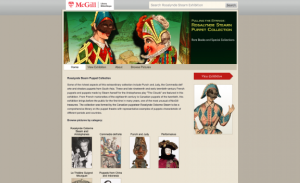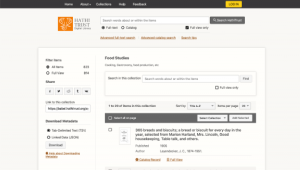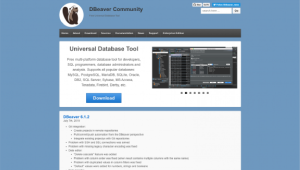Theme: Apollo 11 50th Anniversary
Back to Top
|
 |
|
NASA: Apollo 50th
|
Science |
|
On July 20, 1969, humans walked on the moon for the very first time. To commemorate the 50th anniversary of this historic event, NASA has created this website. Upon their arrival, visitors are greeted with an audio clip of the moment that the Apollo 11 mission successfully landed on the lunar surface. From the home page, there are prominent links to collections of both archival and retrospective videos, images, and audio recordings covering multiple Apollo missions, some of which can also be downloaded. Those interested in learning more about the famous Apollo missions and the context surrounding them should check out the menu along the top of the page. There, readers will find stories and photographs about the events that came before the Apollo missions, including NASA's Project Mercury and Project Gemini, as well as abundant information about all 17 of the Apollo missions and what we learned from them. Other points of interest include a map of all the museums on Earth where visitors can see moon rocks, a collection of downloadable posters and other resources, and a link to NASA's ongoing oral history project where readers can share their memories of the moon landing. [JDC] |
|





|
|
 |
|
Google Arts & Culture: A Giant Leap for Mankind
|
Science |
|
Five decades ago, humans' first steps on the lunar surface marked a culmination of a fascination with the moon that stretched back centuries into human history. For anyone whose imagination is captured by the moon and space travel today, the Google Arts & Culture project A Giant Leap for Mankind provides an impressive amount of fodder. This project is the result of a collaboration between multiple institutions, including NASA, the Adler Planetarium, the National Archives, and the Smithsonian National Air and Space Museum, among others. Visitors to A Giant Leap for Mankind, which was created in celebration of the moon landing's 50th anniversary, can explore a wide array of highly visual digital exhibits about various aspects of humanity's missions to the moon. The project opens with a short montage of archival video footage of the first Apollo 11 moonwalk, followed by exhibits delving into the scientific and cultural events that led up to the Apollo missions. Further exhibits present what life in space was like for the astronauts, as well as what some of the technological challenges were, while others offer perspectives from popular culture and historical viewpoints, making this project a rich experience for all who visit the site. [JDC] |
|





|
|
 |
|
If the Moon Were Only 1 Pixel
|
Science |
|
It is one thing to know intellectually that the universe is enormous, but it is another thing entirely to genuinely understand just how vast it is and how tiny humans are in comparison. One tool to help provide that perspective is this wonderful visualization created by Josh Worth, a graphic and web designer based in Los Angeles. As its title suggests, this project is "a tediously accurate scale model of the solar system," which imagines the moon as being a single pixel in diameter. Unlike many depictions of the solar system that focus on the planets and skip most of the space between them, this project includes empty space in all its barren glory. As visitors scroll through the model, wondering how much farther until the next planet, their journey is punctuated by brief (and often entertaining) commentary. A counter at the bottom shows the distance from the sun with a wide variety of units available, including kilometers, miles, and blue whales. In the bottom right corner there is also an option to scroll automatically at the speed of light, which is not as fast as many might assume. This project has also been translated into a number of languages, accessible via a menu in the upper right corner. Launched in 2014, If the Moon Were Only 1 Pixel received a Webby Award in the Science category. [JDC] |
|





|
|
 |
|
 |
|
Lunar Reconnaissance Orbiter Camera
|
Science |
|
Readers interested in high-quality images of the moon may appreciate the Lunar Reconnaissance Orbiter Camera (LROC), which has been in operation since 2009. This project describes itself as a "system of three cameras mounted on the Lunar Reconnaissance Orbiter (LRO) that capture high resolution photos of the lunar surface." Visitors may like to begin with LROC's Images section, where they will find dozens of photographs of lunar features such as the Sea of Tranquility and the crater Giordano Bruno, as well as downloadable videos created using LROC images and data. Other notable resources in this section are the interactive Quickmap, where visitors can view the moon through a variety of map projections and layers, and the Gigapan, a high-resolution composite image of the moon's northern polar region created from a mosaic of more than 10,000 images. STEM instructors should visit the Educators section, which features well-developed Educator Guides with activities for students from kindergarten through college, concise explanations of lunar science and its history, downloadable posters, and more. LROC is led by its principal investigator Mark Robinson, a professor in Arizona State University's School of Earth and Space Exploration, and by its deputy principal investigator Brett Denevi, a planetary scientist at the Johns Hopkins University Applied Physics Laboratory. [JDC] |
|





|
|














